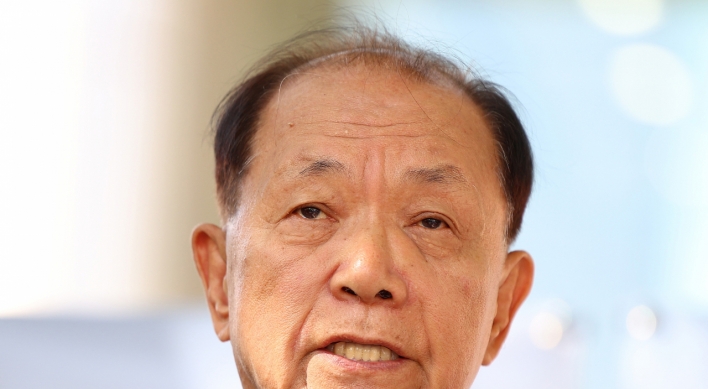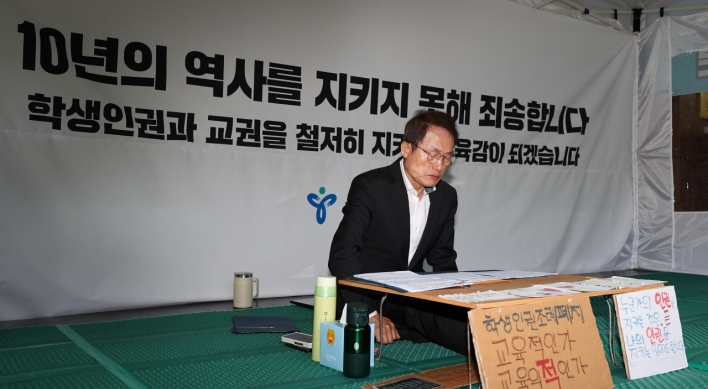Critical factors involve households’ weaker capability to pay back debt
Commercial banks saw the ratio of overdue household loans to their total lending to the retail sector climb to the highest level in 36 months.
According to the Financial Supervisory Service, the delinquency ratio in banks’ household loans came to 0.85 percent in February, up 0.07 percentage point from a month earlier.
The figure is the highest in three years since the ratio reached 0.88 percent in February 2009 when the nation was hit by the global financial crisis.
The household loan delinquency ratio has stayed below 0.8 percent over the past few months under stricter oversight of financial regulators. The figure was 0.67 percent at the end of 2011.
Though the FSS downplayed the February figure, stressing the delinquency ratio has been under close regulatory monitoring, the situation remains critical amid the snowballing household debt.
Furthermore, the delinquency ratio in banks’ housing-collateralized lending surpassed 0.7 percent to reach 0.74 percent in February, compared with 0.69 percent a month before.
The prevailing anxiety persists in the market that household debt is a ticking time-bomb, as outstanding consumer loans approach 1 quadrillion won ($877 billion).
Economists attribute the high delinquency rate to the worsened capability of households to pay their debts as the pace of debt growth is surpassing that of income growth.
Though the country’s gross national disposal income has grown, the ratio of household credit to GNDI has come in at 2.79 in 2011, a gauge measuring the level of household indebtedness against disposable income, higher than 2.76 calculated in 2010.
“A higher figure means a worsening capacity of the average household to pay back its debts,” a Bank of Korea economist said.
Rising inflation is eating into households’ income growth and purchasing power, leading the nation’s domestic demand to grow at a sputtering pace.
The Korea Center for International Finance said the banking sector has gradually been recovering profitability and quality of assets since the global financial crisis. “But the growth in household debt could serve as a risk factor.”
The institution pointed to households’ growing burden of a higher interest rate on mortgage loans.
It also said about 30 to 40 percent of mortgage loans were for the purpose of investment or consumption rather than actual house purchases.
Financial regulators recently instructed banks to reduce their lending rate by setting guidelines and are to urge banks to stop evaluating branches based on their amount of household lending.
But economists say that a key issue is whether the nation would see a soft-landing in resolving the household debt woes.
“The household debt issue is certainly problematic. But it is undesirable for the authorities to lead more borrowers to the secondary financial companies,” said Hyundai Economic Research Institute economist Park Deok-bae.
Financial regulators are cracking down on commercial banks’ risky household lending by instructing them to raise profitability and financial soundness.
In early February, Goldman Sachs predicted that a soft landing of Korea’s household debt will be possible according to the Bank of Korea’s interest rate-setting.
By Kim Yon-se (kys@heraldcorp.com)
Commercial banks saw the ratio of overdue household loans to their total lending to the retail sector climb to the highest level in 36 months.
According to the Financial Supervisory Service, the delinquency ratio in banks’ household loans came to 0.85 percent in February, up 0.07 percentage point from a month earlier.
The figure is the highest in three years since the ratio reached 0.88 percent in February 2009 when the nation was hit by the global financial crisis.
The household loan delinquency ratio has stayed below 0.8 percent over the past few months under stricter oversight of financial regulators. The figure was 0.67 percent at the end of 2011.
Though the FSS downplayed the February figure, stressing the delinquency ratio has been under close regulatory monitoring, the situation remains critical amid the snowballing household debt.
Furthermore, the delinquency ratio in banks’ housing-collateralized lending surpassed 0.7 percent to reach 0.74 percent in February, compared with 0.69 percent a month before.
The prevailing anxiety persists in the market that household debt is a ticking time-bomb, as outstanding consumer loans approach 1 quadrillion won ($877 billion).
Economists attribute the high delinquency rate to the worsened capability of households to pay their debts as the pace of debt growth is surpassing that of income growth.
Though the country’s gross national disposal income has grown, the ratio of household credit to GNDI has come in at 2.79 in 2011, a gauge measuring the level of household indebtedness against disposable income, higher than 2.76 calculated in 2010.
“A higher figure means a worsening capacity of the average household to pay back its debts,” a Bank of Korea economist said.
Rising inflation is eating into households’ income growth and purchasing power, leading the nation’s domestic demand to grow at a sputtering pace.
The Korea Center for International Finance said the banking sector has gradually been recovering profitability and quality of assets since the global financial crisis. “But the growth in household debt could serve as a risk factor.”
The institution pointed to households’ growing burden of a higher interest rate on mortgage loans.
It also said about 30 to 40 percent of mortgage loans were for the purpose of investment or consumption rather than actual house purchases.
Financial regulators recently instructed banks to reduce their lending rate by setting guidelines and are to urge banks to stop evaluating branches based on their amount of household lending.
But economists say that a key issue is whether the nation would see a soft-landing in resolving the household debt woes.
“The household debt issue is certainly problematic. But it is undesirable for the authorities to lead more borrowers to the secondary financial companies,” said Hyundai Economic Research Institute economist Park Deok-bae.
Financial regulators are cracking down on commercial banks’ risky household lending by instructing them to raise profitability and financial soundness.
In early February, Goldman Sachs predicted that a soft landing of Korea’s household debt will be possible according to the Bank of Korea’s interest rate-setting.
By Kim Yon-se (kys@heraldcorp.com)





![[KH Explains] No more 'Michael' at Kakao Games](http://res.heraldm.com/phpwas/restmb_idxmake.php?idx=644&simg=/content/image/2024/04/28/20240428050183_0.jpg&u=20240428180321)












![[Herald Interview] Mistakes turn into blessings in street performance, director says](http://res.heraldm.com/phpwas/restmb_idxmake.php?idx=652&simg=/content/image/2024/04/28/20240428050150_0.jpg&u=20240428174656)
